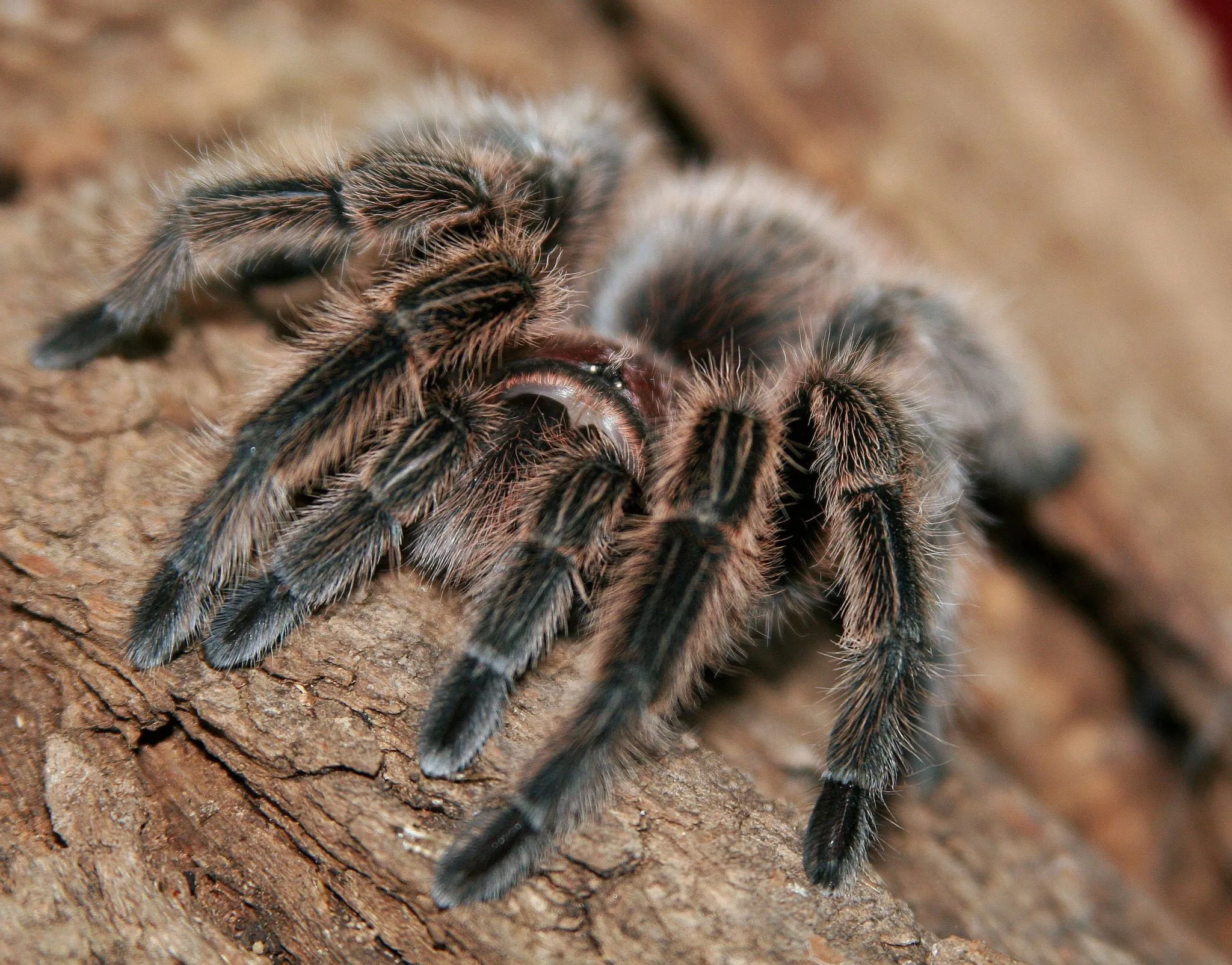Understanding the Chilean Gold Burst Tarantula
The Chilean Gold Burst Tarantula (Grammostola rosea) is a popular pet spider, favored for its relatively docile temperament, beautiful coloration, and manageable size. Originating from Chile, this species is known for its striking appearance, exhibiting a golden or reddish hue on its carapace and legs, hence the name ‘Gold Burst’. This care sheet provides essential information for prospective and current owners to ensure the health and well-being of their Chilean Gold Burst tarantula. Understanding the specific needs of this species is crucial for providing a comfortable and safe environment, allowing your tarantula to thrive. With the right care, these fascinating creatures can live for many years, becoming a rewarding addition to your home.
Appearance and Characteristics
The Chilean Gold Burst Tarantula is a medium-sized species, typically reaching a leg span of 5 to 6 inches. They are known for their beautiful coloration, ranging from gold to reddish-brown. Their bodies are covered in fine hairs, which, along with their overall appearance, contribute to their unique aesthetic appeal. The females are generally larger and live longer than males. Their docile nature makes them a good choice for beginner tarantula keepers, provided they are handled with care. They also possess urticating hairs, which can cause irritation if they come into contact with skin, so caution is advised when handling or interacting with them.
Lifespan and Size
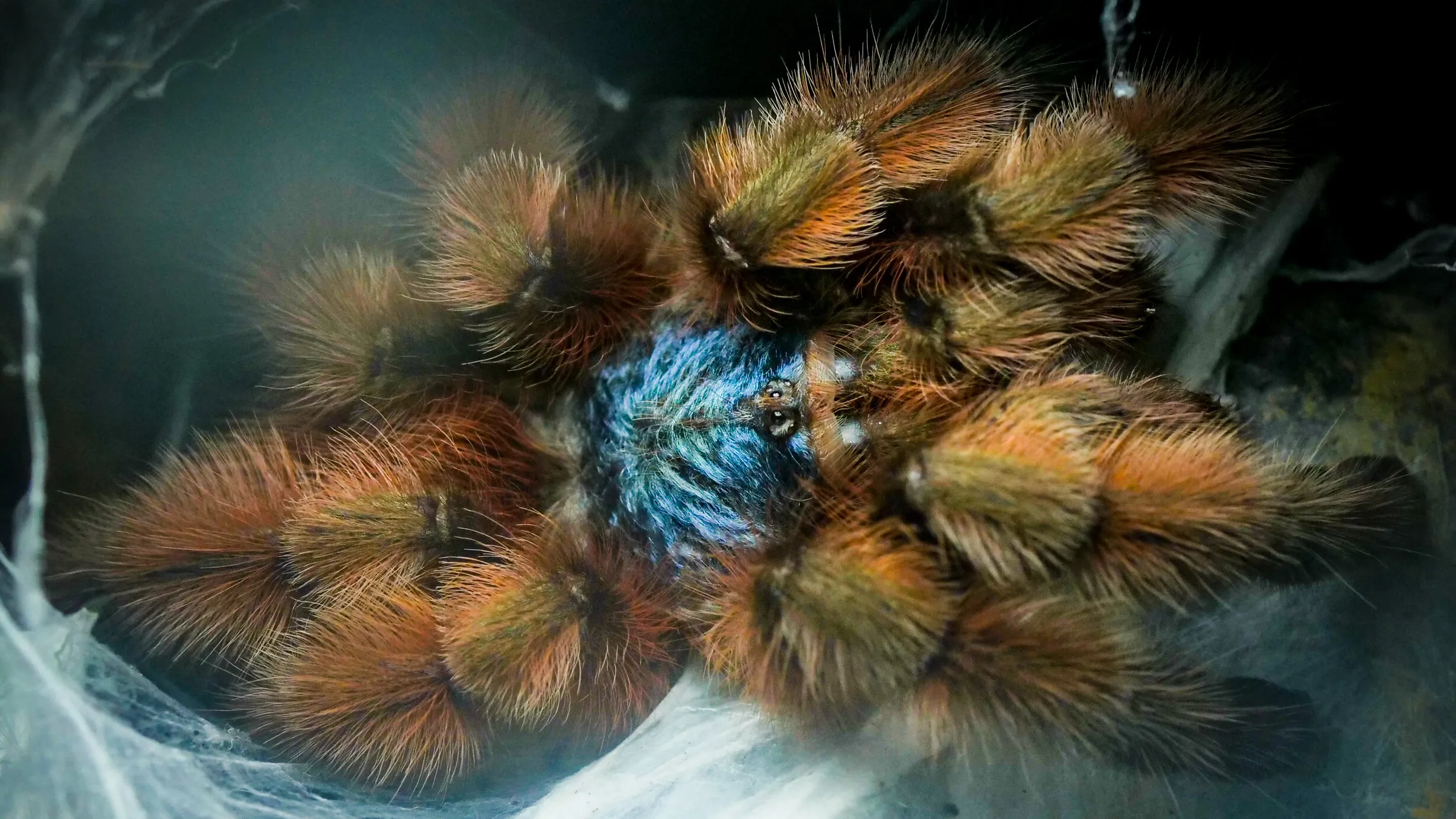
Female Chilean Gold Burst Tarantulas have a significantly longer lifespan than males. Females can live for 15 to 20 years or even longer with proper care, while males typically live for only 5 to 7 years. The adult size varies depending on individual genetics and environmental factors, but they generally reach a leg span of about 5 to 6 inches. Understanding the lifespan difference is important for planning and commitment. Knowing the size they will reach helps in selecting an appropriate enclosure size, ensuring a comfortable and safe environment for your tarantula throughout its life.
Essential Chilean Gold Burst Tarantula Care Facts
Housing Requirements
Providing the correct housing is fundamental to the well-being of your Chilean Gold Burst tarantula. The enclosure must provide a secure, comfortable, and stimulating environment. Proper housing simulates the tarantula’s natural habitat, which is key to reducing stress and promoting normal behaviors such as feeding and molting. The enclosure should be escape-proof, easy to clean, and allow for the necessary temperature and humidity gradients. Consider the size of your tarantula when selecting an enclosure, as a cramped environment can lead to stress and health problems. Ensure ventilation is adequate to prevent the build-up of harmful gases.
Tank Size and Setup
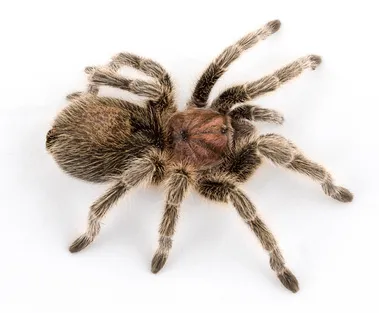
For juvenile Chilean Gold Bursts, a 5-gallon tank is generally sufficient. As they grow, a 10 to 20-gallon tank is recommended for adults. The tank should be wider than it is tall, as these tarantulas are terrestrial and spend most of their time on the ground. A secure lid is essential to prevent escape. The enclosure must have good ventilation, which can be achieved by including air holes in the lid or side of the tank. Provide a shallow water dish for hydration, and make sure to change the water regularly. The overall setup should provide a safe and enriching environment.
Substrate and Decor
The substrate is a crucial element of your tarantula’s habitat. It absorbs waste, helps maintain humidity, and provides a surface for burrowing. A good substrate for Chilean Gold Bursts includes a mix of coconut fiber, peat moss, and a small amount of vermiculite. The substrate should be deep enough for the tarantula to burrow if it chooses, usually about 3-4 inches. Include décor such as cork bark, driftwood, or artificial plants to provide hiding places and enrich the environment. Ensure all décor is safe and free from sharp edges that could injure the tarantula. Replace the substrate regularly to maintain hygiene.
Temperature and Humidity
Chilean Gold Burst tarantulas thrive in a temperature range of 75-85°F (24-29°C). Maintain this temperature using a heat mat or ceramic heat emitter on one side of the enclosure, allowing for a temperature gradient. Never place the heat source directly under the enclosure. Humidity levels should be kept around 60-70%. Achieve this by misting the enclosure lightly with water once or twice a week and ensuring the substrate remains slightly moist but not soggy. Proper temperature and humidity are crucial to support healthy molting and overall health. Use a thermometer and hygrometer to monitor environmental conditions accurately.
Feeding Your Tarantula
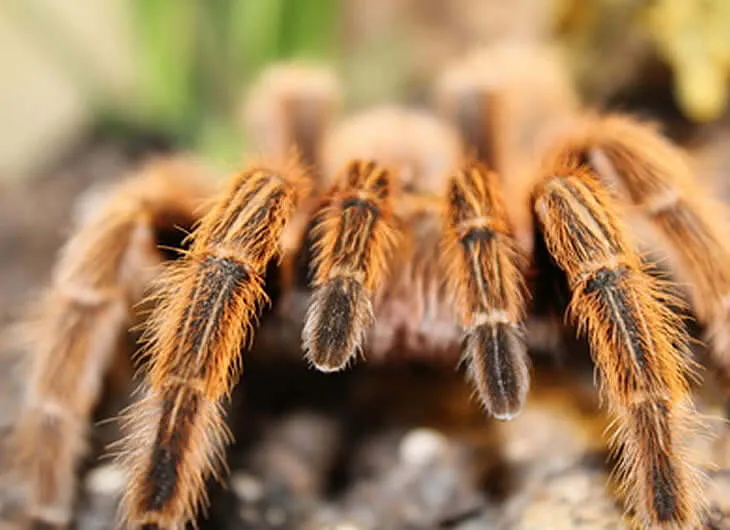
Proper feeding is essential for the health and growth of your Chilean Gold Burst tarantula. They are opportunistic feeders and will eat a variety of insects. Providing a balanced diet will keep your tarantula healthy and promote healthy molting. The type of food and the frequency of feeding should be adjusted based on the tarantula’s age and size. Always remove uneaten food to prevent mold and mite infestations. Fresh, clean water should be available at all times to keep your tarantula well-hydrated.
What to Feed
A varied diet is important for your tarantula’s health. Suitable foods include crickets, mealworms, dubia roaches, and appropriately sized grasshoppers. The insects should be gut-loaded with nutritious food (like vegetables and commercial cricket food) before being fed to the tarantula to maximize nutritional value. Avoid feeding insects that have been exposed to pesticides, and make sure the insects are smaller than the tarantula’s body. Supplement occasionally with pre-killed prey items if needed. Always offer clean and fresh water.
Feeding Frequency
Feeding frequency depends on the age and size of your tarantula. Spiderlings should be fed two to three times per week. Juveniles can be fed once or twice a week. Adult tarantulas can be fed once every one to two weeks, depending on their size and appetite. Observe your tarantula’s abdomen; a plump abdomen indicates a well-fed tarantula. If the tarantula refuses food, it may be in pre-molt. Reduce feeding frequency if your tarantula seems uninterested in food, as this may signal an impending molt.
Water and Hydration
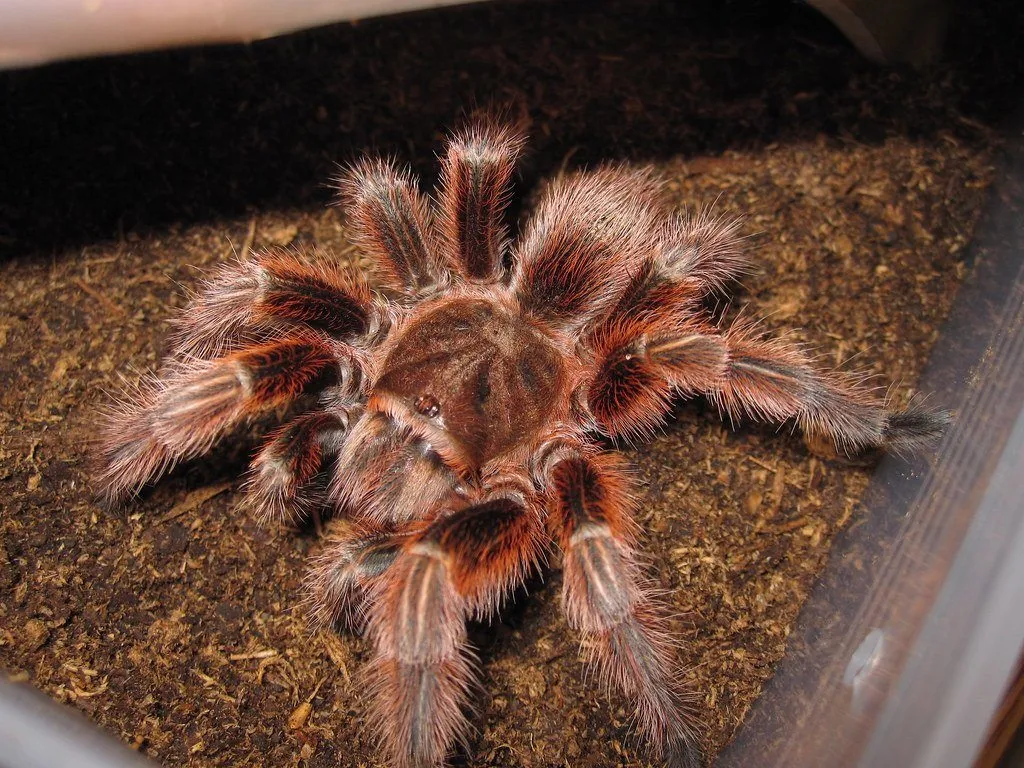
Providing fresh water is crucial for your Chilean Gold Burst tarantula. Use a shallow water dish, ideally one that is easy to clean and cannot be tipped over. Fill the water dish with clean, dechlorinated water. Monitor the water level daily, and refill as necessary. In addition to the water dish, you can lightly mist the enclosure once or twice a week to maintain humidity and provide additional water droplets for the tarantula to drink. The availability of fresh water is critical for the tarantula’s overall health, especially during molting.
Molting Process
Molting is a natural process where tarantulas shed their exoskeleton to grow. During this period, your tarantula will become inactive and may stop eating. Create a safe and undisturbed environment during molting. The tarantula will usually flip onto its back during the molting process. Avoid disturbing the tarantula during this time, and do not feed it until its fangs have hardened and it has resumed normal activity. Provide adequate humidity during molting to ensure the process is successful. Once the molt is complete, remove the old exoskeleton from the enclosure.
Handling and Safety
While Chilean Gold Burst tarantulas are generally docile, handling should be approached with caution. It is important to understand the potential risks and take necessary precautions. Always be gentle and avoid sudden movements. Handle them only when necessary, and be prepared for potential defensive behaviors. Educate yourself on the tarantula’s behavior and signs of stress to ensure safe interactions. A careful approach will help reduce the risk of bites or other injuries.
Handling Risks
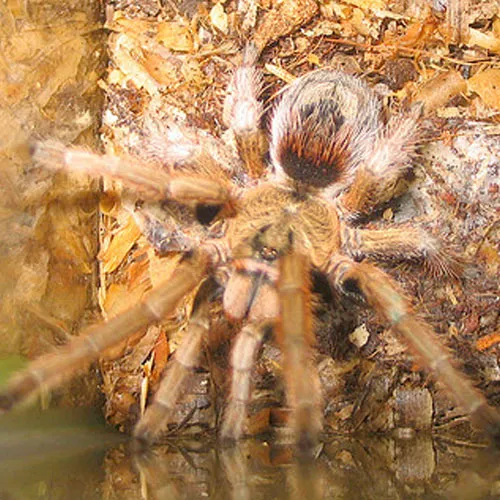
Although rare, Chilean Gold Burst tarantulas can bite if they feel threatened. Bites are usually not medically significant, but they can be painful. Tarantulas also have urticating hairs on their abdomen, which they can flick at perceived threats. These hairs can cause skin irritation and itching. Avoid handling your tarantula directly on bare skin whenever possible. When handling, it is best to do so close to a soft surface, in case the tarantula falls. Thoroughly wash your hands after handling to avoid any irritation from the urticating hairs.
Signs of Stress
Recognizing signs of stress is crucial to ensure your tarantula’s well-being. Signs of stress in Chilean Gold Bursts include excessive hiding, refusing food for extended periods, flicking urticating hairs, or a defensive posture. Avoid handling your tarantula if it displays these behaviors. Providing a stable and stress-free environment is key to preventing stress-related problems. Make sure the enclosure is appropriately sized, with correct temperature and humidity levels. Reduce loud noises and sudden movements near the enclosure, and provide adequate hiding places.
Health and Common Issues
Like all animals, Chilean Gold Burst tarantulas can experience health issues. Familiarize yourself with common ailments and how to address them. Early detection and intervention are crucial for successful treatment. Prevention is always better than cure, so focus on providing a healthy and hygienic environment. Keep a close eye on your tarantula, monitoring its behavior and appearance for any signs of illness. Consult with a veterinarian or experienced tarantula keeper if you notice anything unusual.
Recognizing Illness
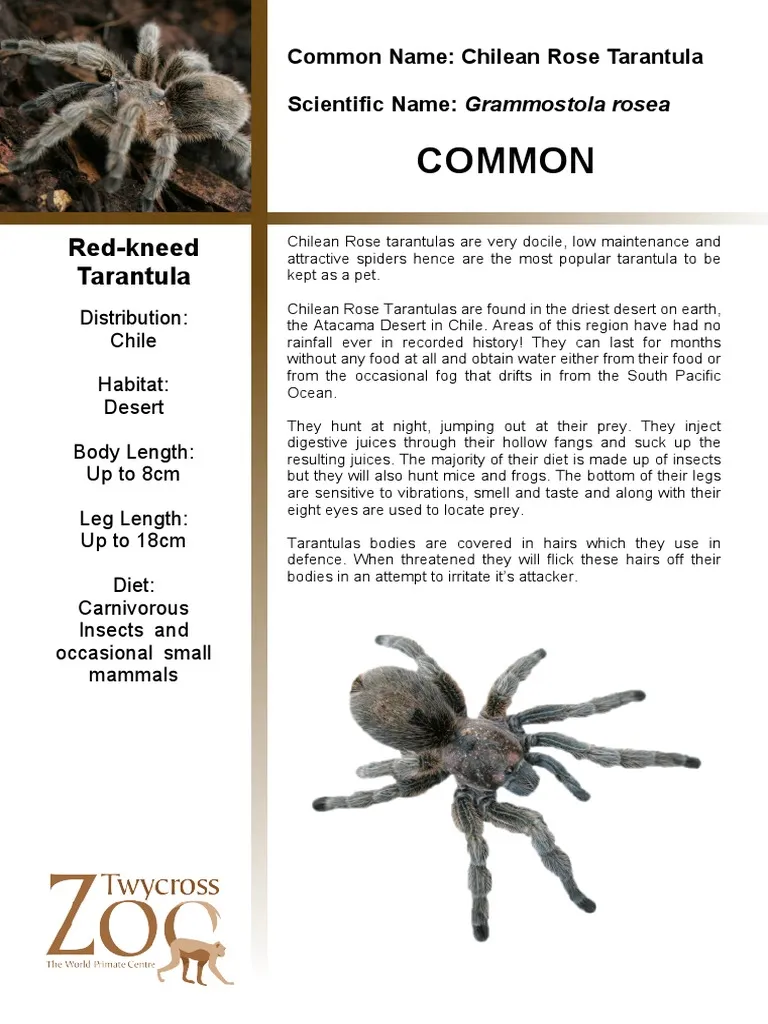
Recognizing signs of illness is essential for timely intervention. Common signs include lethargy, loss of appetite, unusual posture, and difficulty moving. Other signs can include a distended abdomen, loss of leg control, or the presence of parasites. If you notice any of these signs, isolate your tarantula and consult a vet or experienced tarantula keeper immediately. Don’t attempt to treat any illness without the proper knowledge and guidance.
Preventative Care
Preventative care is key to keeping your Chilean Gold Burst tarantula healthy. Maintain a clean and appropriate enclosure. Provide a balanced diet and fresh water. Monitor temperature and humidity, ensuring the environment is within the required range. Avoid handling the tarantula unnecessarily. Regularly inspect the tarantula for any signs of illness or parasites. Quarantine new tarantulas for a few weeks before introducing them to other spiders. Following these preventative measures will contribute significantly to a long and healthy life for your tarantula.
In conclusion, the Chilean Gold Burst tarantula can be a rewarding pet for those who are prepared to provide the necessary care. By understanding their specific needs, including appropriate housing, diet, and handling techniques, you can ensure your tarantula’s health and well-being for many years. This care sheet provides the essential facts to begin your journey as a tarantula keeper, ensuring a positive experience for both you and your captivating arachnid companion. Always continue to learn and research to deepen your understanding of these fascinating creatures. Enjoy your pet!
